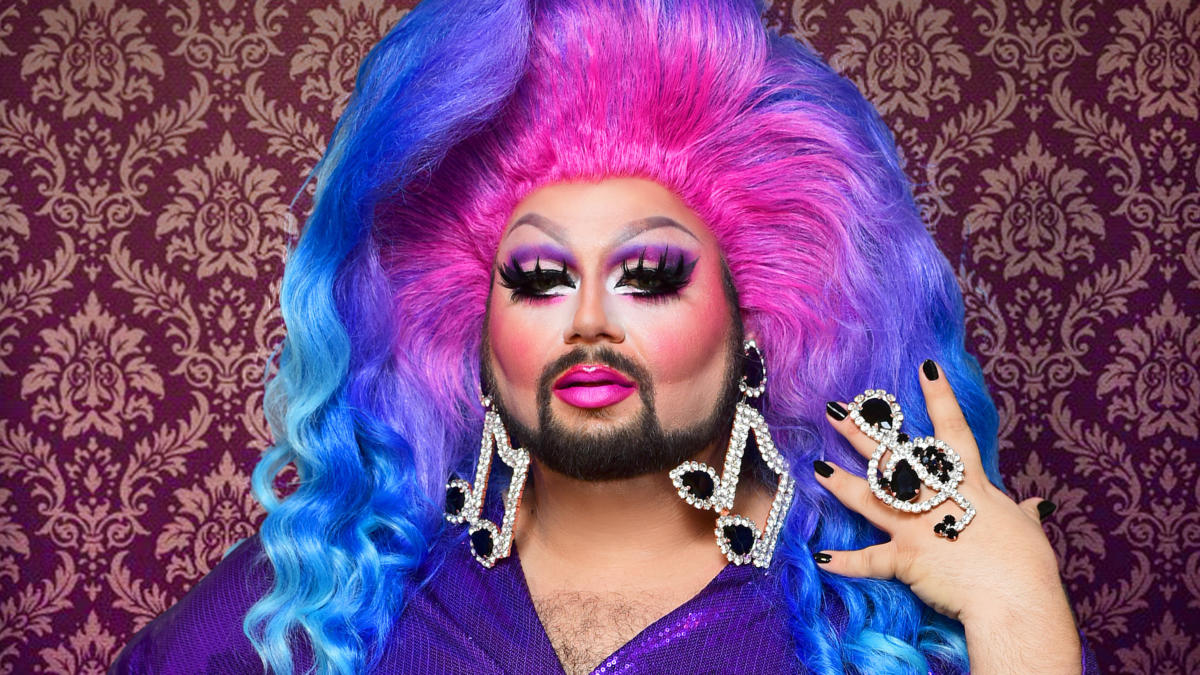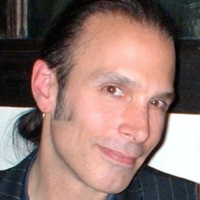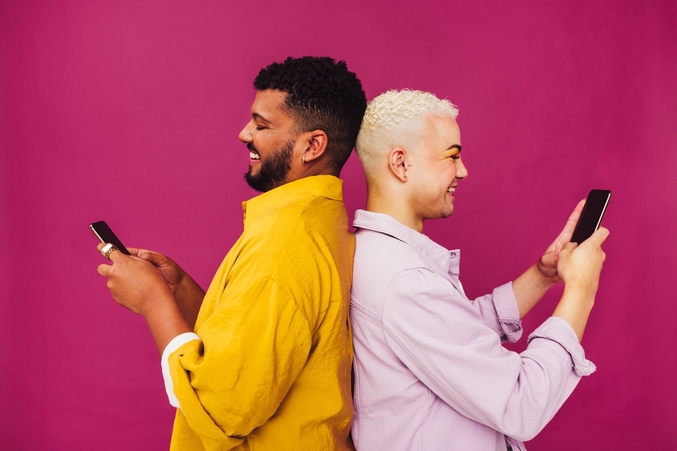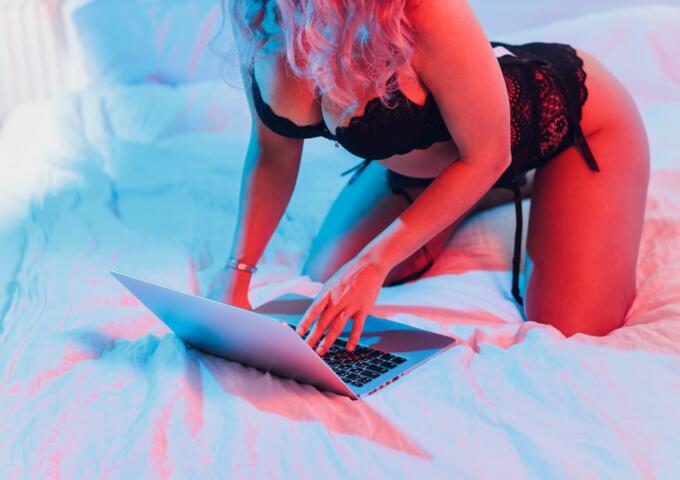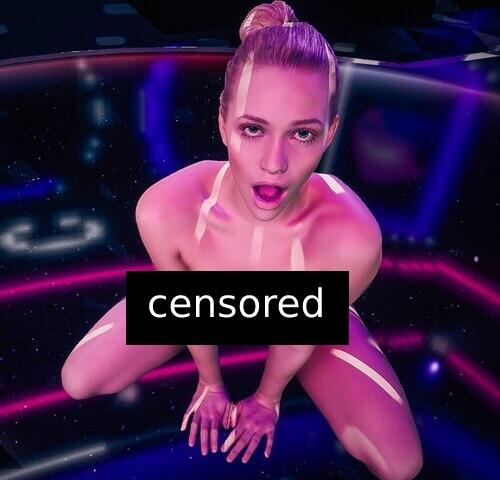Drag queens in Philadelphia are like this city’s neighborhoods: many, diverse and filled with rich histories.
If you said “filled with potholes” and “dirty with sequin trash from New Year’s Eve,” you’re only half right.
There are dancing drag queens, singing drag queens, lip-syncing drag queens, stand-up comedy queens, reading drag queens, playing drag queens, acting drag queens, composing drag queens – all, more so than ever before, bolstered by a sense of righteous activism, gender inclusiveness and forceful self-determination.
And with no Mummers allowed.
There’s a history to the Philly drag scene that goes back to the ‘50s and ‘60s of Miss P’s and The New Forrest Lounge, and futurism carried into every drag brunch and dinner theater scenario.
Long past the singular goal of celebrity impersonation (that too being its own art form, and the province of many a drag legend) Philly drag personages have their own fabulous focus.
The legendary Martha Graham Cracker and those within John Jarboe’s Bearded Ladies are their own brand with their own self-made aesthetics, each interacting with club crowds, theater-goers and concert art hall attendees.
Aira and Miss Peaches are both equally regarded for their political activism as they are their stunning looks and tantalizing talents. Sapphira Cristal is a superior vocalist who just won the title of Miss’d America 2020. Bobby Fabulous is one of Philly’s most sought-out costume designers.
If Philadelphia’s electric union needs a new organizer, they’d do well to involve Miss Lisa Lisa who has long forever run the Thursday night drag shows at Bob & Barbara’s. Aunt Mary Pat and Bev will make you laugh until your corset drops from their stand-up routines. VinChelle (aka Shea Butter Work) has become drag Philadelphia’s official hostess with the mostest, taking care of queens and kings at Boxers and Woody’s, and guiding them through a night’s worth of adventures while screening “RuPaul’s Drag Race” episodes. That is when Aloe Vera, The Goddess Isis, Cleo Phatra and Sandy Beach aren’t vying for the same title.
This story isn’t just about a cross-section of several of the stars, legends and up-and-coming wonders of Drag-a-Delphia. This story tells just a little bit about how these drag artists – people who eat, sleep and live drag – got to where they landed, where they’re going next, and what the close-knit Philadelphia scene means to them.
Cookie Diorio – opera and gospel singer
For a singer with such a hilariously silly name, opera and gospel vocalist and University of the Arts teacher Cookie Diorio looks and sounds as stately and elegant as her deepest aesthetic influences, “the classic black opera divas” such as Leontyne Price, Kathleen Battle and Jesse Norman.
“They were always in glamorous gowns and big hair – and not afraid to show natural hair,” said Diorio, who achieved her “hair fantasy” by studying vintage videos of classical vocalist Grace Bumbry. “I really started out wanting to be Diana Ross,” said Diorio with a laugh, about growing up in Auburn, New York, with her first drag performances being those in “my grandmother’s dress, spinning around the living room when she was not home.”
“I grew up in the town where Harriet Tubman settled in New York state, a block and a half from her house. I went to her church, learned civil rights and how to stand up for what is right, who you are AND express it loudly, at her doorstep.”
Drag diva with an angelic voice Cookie Diorio
Trained in voice and speech at Ithaca College (along with studies in classical music, vocal pedagogy, choral arts, composition and opera coaching), Diorio moved to Philly when her husband, a scientist, found work in the area. In and out of the drag scene since 2002, and taking a considerable amount of time off to concentrate on teaching (“along with singing as my boy self, in a professional opera capacity”), she became “Cookie Diorio” in 2013 when singing at Philadelphia’s Art Song Repertory Theater Company’s salon series, Saturday Afternoon Drinking Songs when a problem arose.
“We suddenly needed a host, so I said, “Wellllllll, I used to do this thing, a lot. That’s when ‘Cookie’ in this form was born, mixing drag and opera and gospel.”
Beyond the art and artifice, however, Diorio – whose motto for 2020 is to be her own spirit animal – is even more dedicated to LGBTQ freedoms, equality and politics.
“I grew up in the town where Harriet Tubman settled in New York state, a block and a half from her house. I went to her church, learned civil rights and how to stand up for what is right, who you are AND express it loudly, at her doorstep.”
With that, Diorio – who will appear next at the Barnes on Feb. 7, in a celebration of iconic inspirations, ‘60s girl groups and Beyonce before leaving for New Zealand with Philly’s Bearded Ladies troupe – expresses love of the local drag scene and its most politicized members.
“I don’t get out like I used to,” she said. “I can’t work all day, spend two hours putting her ‘all on,’ come in at 2 a.m. and start over. But I love this scene a lot, the talents they have, and the stances they take with their drag. Like Miss Peaches, I’m blown away by her, a phenomenal artist who incorporates politics into her art. For an artist such as that, I‘ll do anything to uplift a sister.”
Brittany Lynn – host and Don of Philly’s Drag Mafia
To truly know Philadelphia drag, you must consider Brittany Lynn – actor, host supreme, singer, Fancy Brigade parade leader, den mother to an A-Team of local drag performers, and an avatar of the controversial Drag Reading Series, for impressionable kids, in neighboring libraries and schools. For all this, Lynn has been awarded her own day, March 15, from Mayor Jim Kenney, and the City Council cited her efforts in breaking down barriers between our city’s diverse communities and bringing our LGBTQIA community to mainstream constituents in both the Mummers Day New Year’s Day Parade and Independence Day gatherings.
“A gay boy living in the Northeast through the 1980s and ‘90s, kept inside a closet until age 19, had no choice but to become something more fabulous than his surroundings,” said Lynn. “So when my door swung open, and I could discover who I am rather than what I thought I was supposed to be, I knew I just needed to be seen.”
Starting off having to be a cookie-cutter drag queen – proper pumps, nails, lashes, and padding “like I was on ‘Dynasty’” – Lynn went back to her club kid roots and did her own thing with an explosive version of Big Womanhood (a favorite look includes Victoria’s Secret tube dress with an attached choker collar, the greatest Farrah wig the Earth has ever seen, and Mary Jane pumps) that was comic, theatrical and boldly vocal.
“And it’s still working for me 24 years later. When I’m Brittany, I’m exposing you to the most extreme version of myself. So I need to look my part.”
Ask about her impression of the drag scene, and Lynn said it is ridiculous, “living kindergarten to high school every day, except now it’s online for the world to see. It’s not fighting on reality shows and throwing shade, or painting your mug like every other YouTube tutorial persona of the day. The drag I want to see sends a message and it’s backed with TALENT. So while it becomes more mainstream with every second of the clock, there are still those that push beyond that wall and get my attention.”
“A gay boy living in the Northeast through the 1980s and ‘90s, kept inside a closet until age 19, had no choice but to become something more fabulous than his surroundings. So when my door swung open, and I could discover who I am rather than what I thought I was supposed to be, I knew I just needed to be seen.”
Philadelphia drag queen extraordinaire Brittany Lynn
Where The Drag Queen Story Time program is concerned, Lynn calls it the most rewarding work she’s done.
“We have a dress-up time where the boys choose my Princess dresses, and the girls want to be Pirates. It inspired me to write my own children’s book, ‘The Adventures of Miss Kitty Popcorn and Cheese,’ and all of the money from the book goes back into the program so I can go to other areas that cannot afford children’s programming.”
Here, Lynn gets parents that ”all gays wanted when we grew up … parents that want to expose their children to all cultures and lifestyles. … I get a lot of Bible bumpers that tell me on the reg that I will burn in hell, but they will pray for my soul. Last week, I got my first gun threat from a guy living in Australia, and then another posted he wanted to slit my throat. The same guy messaged people on the page and told them that they should kill themselves and their children. So yeah, we get those dicks, and they’re flaccid.”
Regarding the proliferation of drag events and the popularity of “RuPaul’s Drag Race,” Lynn said seeing drag all over social media, TV and movies does take the fun out of things. Yet when she was growing up, and not having any visible representation of gay lifestyles or drag – “except for Jodie on ‘Soap’ – that made me think there was something wrong with being gay in the first place. You can’t have your cake and eat it too. Just make sure your cake is gayer than everyone else’s.”

Iris Spectre – dancer and designer
Iris Spectre is a woman-of-a-thousand faces, all angular, and all with twice as many stylish, era-specific self-sewn looks and three times the choreographic moves to behold. Whether in the capacity of a dance/performance artist, a host (e.g. with VinCelle at Boxers’ Turn Out Tuesday’s variety show), or just as a fashion maven, Iris Spectre has all the goods to make her an up-and-coming star.
Who knows, though, what Delco native Spectre could have become if she didn’t have to leave school, New York City’s Parson School of Design, for a family emergency that brought her home for good.
“The nice thing was that I brought my drag personae back to Philly with me in 2012,” she said, confidently. “Being a fashion designer, working in fine arts, everything I was doing hadn’t reached a pinnacle … never achieved a climax. Working with fashion, how that interacted with the body in 3-D form, translated into performance. But, rather than design for other people, I became that performer. I realized I could just do that, and that was OK. Iris came out of that.”
“We are very conscious of who we are, about how we feel about ourselves [and] about how we are treated in this community.”
Philadelphia resident drag queen Iris Spectre
Or, rather at least eight different versions of Iris came out, and she talked about her club kid looks roots.
“I had no boobs, no pads, lots of lingerie and patent leather with punky spiky hair. Then it developed into this robot concept where I built a robot suit – that became my thing for a while – which eventually translated into something with a ‘20s flapper feel. I hate feeling stagnant. I just recently morphed into this slicked back, sequin power suit-wearing woman, something on the cover of a Duran Duran album. Very figure line. It’s just where I am in my life. Now I feel like wearing suits, so I’m a suit girl.”
Along with supporting her sisters in drag and praising Eric Jaffe and VinChelle, Spectre is over the moon to be part of a scene that’s radically self-aware.
“We are very conscious of who we are, about how we feel about ourselves, about how we are treated in this community. We’re making sure the other is respected and loved and safe … all the clubs have made active changes too to make sure that happens.”
On Feb. 22, Spectre will perform her new one-woman-show “Shades of Brocade” at Franky Bradley’s, a video and performance piece featuring eight different acts in the same fabrics, but in the fabric in different colors and weights.
“My mom and I have this mantra – and we’ve been through a lot together – ‘go with what got you there,’” said Spectre, referring to his dedication to fabric, fashion and dance. “Move forward with the energy that got you there in the first place. Remember where you came from.”
Miss Redd – costume designer and performer
One of this city’s most renowned drag clothiers and performers, despite her being a “baby queen” only in the biz for about a year, South Jersey’s own Miss Redd said she started out life “terrified” of drag queens.
“Shortly after coming out, I went to NYC Pride for the first time. I had no idea what drag was, and had a very tall queen walk up to me and say ‘Hey, sugar.’ That scared me so much that I avoided queens for the next five years. I came into my own persona after dating a queen – ironic, I know – and realized how much of an art form it is. I now get to play every female part I’ve ever wanted to be. Miss Redd is a brassy Broadway diva who can trick, sing live, and live all her fantasies.”
A costume designer by trade with a sense of history, the young Miss loves creating outfits for other area drag queens, as well as allowing her own costumes to determine what songs she will sing, and what acts she will commit.
For Redd, being a performer versus what she does as a seamstress/costume creator go hand-in-hand. Having the ability to create her own looks elevates her performance.
“Sewing is hard work, but when I create something new and beautiful, my character comes to life. I’ve gotten to create my own versions of Anna from ‘Frozen,’ Mrs. Lovett from ‘Sweeney Todd,’ beautiful gowns just because I was inspired to.”
Redd has only been part of the drag scene for a minute, but already recognizes a shifting scene and its vibes.
“I came into my own persona after dating a queen – ironic, I know – and realized how much of an art form it is. I now get to play every female part I’ve ever wanted to be.”
– Performer and costume designer “Miss Redd”
“When I first started going to shows, it was more glamour, high-energy dancing, tricks, and even pageantry.”
Redd feels like the scene is becoming more alternative and alive.
“Everyone should have a platform and space to express themselves and share their art.”
But, she steers clear of real and heavy politicking.
“Entertaining people brings me joy. The last thing I want is to get involved with the drama behind the scenes.”
As for her motto, Miss Redd pursues the route of being brave and not being afraid to make mistakes.
“You can’t learn or grow if you’re not willing to screw it up once in a while. I’ve had terrible painting days, wigs fly off because they weren’t glued well, heels break. But at the end of the day, you pick up the pieces and move on. Use more glue, darken that contour, grab a new pair of heels, and be the most sickening queen you can.”
Sasha Mala – Drag Story Time reader and activist
A Philadelphia native, a person of color, and a queen with “a crazy life” – being homeless at 15, joining the Army – Sasha Mala believes that showing the world that her sexuality doesn’t define her or what she’s capable of doing is crucial to her existence.
“I like breaking stereotypes and showing others that as long as you’re content and proud, you’re capable of doing anything you want. Sasha Mala helps me do that. As Anthony, I’m precocious and often quite introverted, but, as Sasha, I’m able to honor the queer POC that came before me and carve out a path of equality.”
Considering that Sasha’s favorite drag look of hers was one honoring Marsha P. Johnson – an American gay liberation activist, Stonewall avatar and self-identified drag queen – tells you where Mala’s head is it. “That look reminds me to honor anyone that fights for equality.”
Sasha began a life in drag because she felt that the form had become “too mainstream” and “many new queens have forgotten what drag queens and trans women have gone through in order to live in the world we live in today. The Philadelphia queer community is notoriously segregated by class and race, and there are many drag queens in Philly that continue to perpetuate the segregation. Luckily, I came into drag where there’s a resurgence of politics, especially with newer queens who remember that drag isn’t only about being famous, getting on television, making podcasts etc., but about a stronger queer community. I personally only perform songs that are by POC, and try to be a part of projects that I believe in. Like Drag Queen Story Time with Brittany Lynn.”
Ask Sasha about her impression of the drag scene and she thinks much of it has digressed, but there are pockets of drag where the performers continue to strive to be creative while forming strong community ties.
“Radical shows like ‘alt slut,’ Haus, LMAO Clinic. You can find awesome performers who really strive to push boundaries and welcome everyone with open arms regardless of race and class. Performing, creating and being an activist is all in one for me. It’s when I feel most powerful because getting in drag is the moment I break boundaries and stereotypes.”
Along with digging Lynn, Sasha digs Iris Spectre, Little Piece and Fyarla, and comes with a motto that is humble and honorable: “Remember those who came before you, and make those who come after you proud.”

Eric Jaffe and Lili St. Queer – composing, creating a dynamic duo
What happens when the performer, writer and the ukulele-playing host of Tavern on Camac’s “Eric Jaffe Show” and pianist, singer, composer and chef Lili St. Queer get together? They break down the gender binary and come up with wildly hilarious and gorgeously melodic drag parody musicals such as “Gay Mis,” “American Hamstand” and now, “The Lizard of Oz,” and a cast of characters, such as Scarecrow-No-She-Better-Don’t and The Tin Non-Binary Person at the Painted Bride Feb. 7- 16.
Here’s a quick chat with the twosome.
How and why would each of you say you came to who you are at present, whether you think of it as a persona and a set of clothes and cues, or, in Eric’s case, non-binary? What was that evolution like?
Eric Jaffe: I came to be the performer that I am today through a lot of trial and error, When I realized that working in theater was way too restrictive for me, I turned to cabaret, and through that found drag. I was nervous to become a drag performer because I was dealing with my own feelings on gender expression, so I took my time. My evolution was slow. I took about five years to become the genderless glamour monster that I am today.
Lili St. Queer: For some queens, drag is a bigger, louder version of their own personality. I was more drawn to the idea of creating a character at first, so finding Lili was all about stepping outside of myself and experimenting. Eventually, I realized that Foster’s anxiety and neuroticism were great comedic fodder, and Lili began taking on more of it. Now I think Lili is as true to me as she is her own beast.
Was “drag” always connected to art and theater and music for both of you?
Eric Jaffe: My performance style always revolved around live singing, and comedy. I grew up in the theater, I was the truest version of a theater nerd that you could find. Growing up, if you asked me what I wanted to be, my answer was always “a Broadway star!” But when I went to school for theater the professors told me that I would have to “pass as a straight person” if I wanted to be a working actor, I wasn’t willing/able to lose myself, some of us are just too queer to hide it, ya know? So when I turned to cabaret and drag, I didn’t think that I could include theater in that mix ….at first.
Lili St. Queer: Yes. One of the reasons I started drag was that I was struggling to find success as a musician. I noticed the drag scene had what I was missing – a fervid audience, lots of performing opportunities, and a community of artists to collaborate with and learn from. I was still writing and playing music, but people liked it better in heels.
Is there one look of yours that most impressed and amazed you?
Eric Jaffe: My incredible partner and now fiance is an outstanding balloon artist, and he makes these incredible dresses out of balloons.
Lili St. Queer: I had a photoshoot last year to promote my one-woman show, Cabaret Sauvignon, and I wanted a look that conveyed the way I mash genres and rearrange songs. It was a Mozart-burlesques-to-Zeppelin moment, with a pink wig coiffed in rolls, a frilly blouse, corset, and fishnets, with a black guitar slung over my shoulder. It felt correct.
Doing the Gay Mis parody was outrageous as you focused on something grand and literary. Where are you going with The Lizard of Oz?
Eric Jaffe: Gay Mis was about tearing Les Mis to shreds and going completely absurdist with the show. The Lizard of Oz is a different kind of parody where we are balling up three shows – Wicked, The Wizard of Oz, and The Wiz – and melding them together.
Lili St, Queer: We have parodies from all three plus some original music, an unbelievable cast, and our biggest set yet, Oh and lizard people. It’s got, lizard people.
How is The Lizard of Oz equal parts the both of you?
Eric Jaffe: Lili is an absurd lizard person herself, so obviously she was the perfect person to write this show. Our humor blends so well together, we have been working together for so long that when we sit down to write, the jokes basically write themselves.
Lili St Queer: It’s been an amazing collaborative process. We wrote the script together, and the script really balances my absurdism with Eric’s flatulence. Eric is directing, and I’m music directing – so the rehearsals are also a joint effort. It feels like we’re birthing this child together. I assume this is what birthing a child feels like.
Can you give me a non-binary drag based picture of the proceedings, what we’ll see, what will hear, what we’ll feel?
Eric Jaffe: One of the goals that I set in starting this theater company was to break down the gender binary that is SO heavily attached to the theater. Non-binary and trans artists are expected to audition for shows as whatever gender society says they fit. Basically, if you have a high voice, you have to audition for women’s roles, and if you have a low voice you have to audition for men’s roles. It is my pleasure to break down that wall and cast as many trans and non-binary people in whatever role they fit. I hope that more theater companies will follow suit, it is as easy as pushing a transpose button on a keyboard.
What is your motto when it comes to all things drag and credo when it comes to living a non-binary life?
Lili St. Queer: Just be yourself. Follow your own path, and never let anyone tell you that you’re too out of the box. And never forget the trans women of color who fought so that we could be here today
